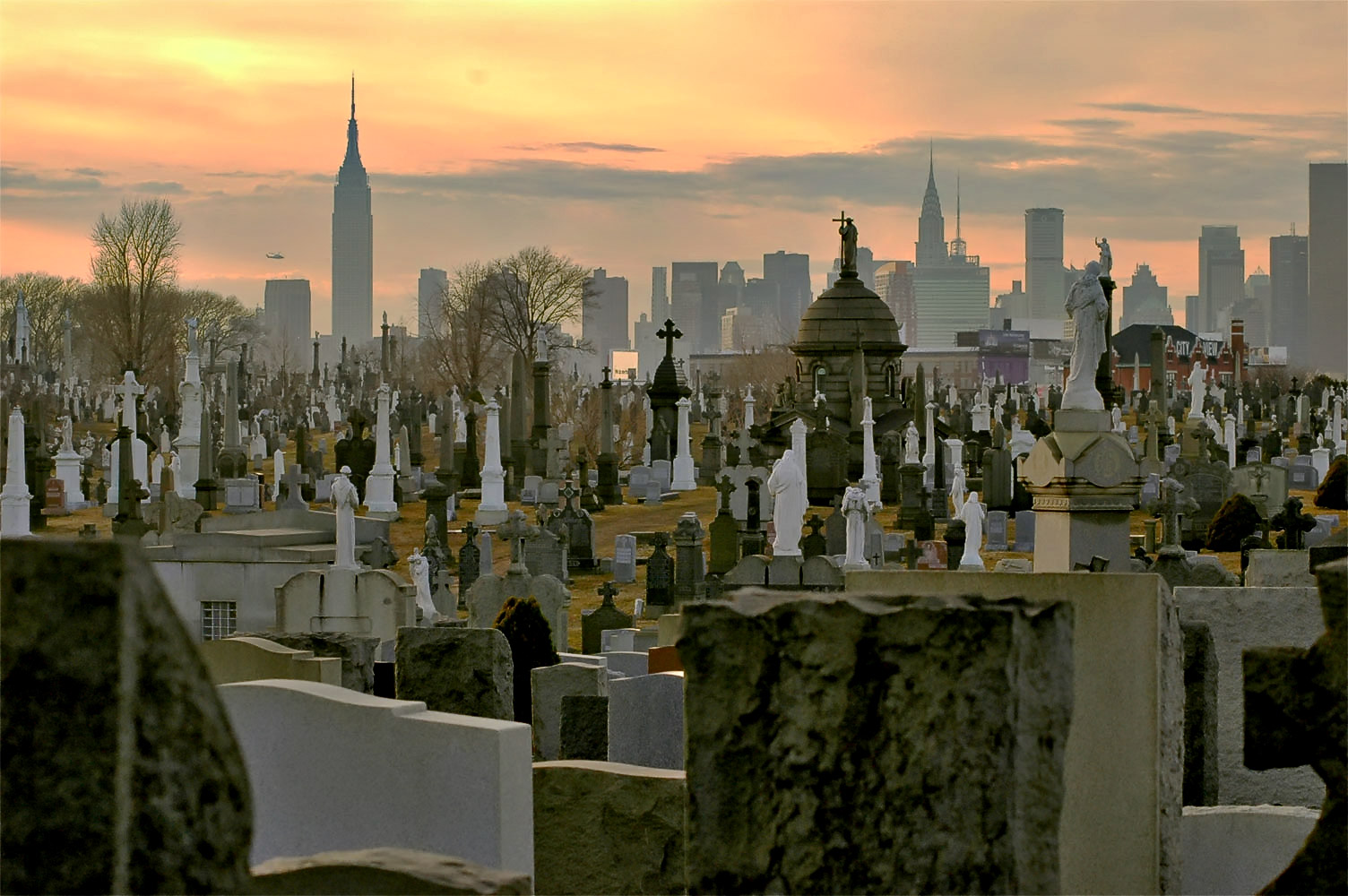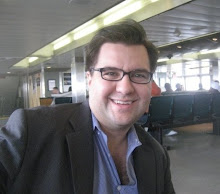Easter, 2010

This morning I woke up with the sudden awareness that it was Easter Sunday, and that I had nowhere to be for a full twenty-four hours. Work has been intensely busy as of late and I haven't had much time to myself for many months. Feeling restless, I decided it would do me some good to get out of the house. Last fall, I moved out of Manhattan and back to the wonderful neighborhood of Sunnyside Queens, where I had previously resided from 2002 until 2005. As a local history buff and a long-time genealogy enthusiast, I had been waiting for the weather to get nicer with a fervent hope of exploring some of the area's local history treasures. Knowing that it would prove truly impossible to top the sunny utopia created by today's 68 degree brilliance, I thought it was as good a day as any to hike around the neighborhood, in search of a better understanding of historic Western Queens.
There's a wonderful website called “Find A Grave”, which (despite its current lack of a cohesive design, and its advertisement-prevalent layout) is one of the most interesting and powerful concepts among digital genealogical repositories. The idea is, quite simply, to record information for all of the world's cemeteries. It is a constantly-growing, user-driven compilation of information. One of the most useful features of Find A Grave, is that it lets the general public collaborate to build the largest shared database of burial information in the world. Whereas gravesite information in the past was typically only available by contacting the cemetery office (and, even that assumes you know in WHICH cemetery your ancestor is buried) with this website, members of the community-at-large can pool their resources and knowledge for the better good – creating a stronger, searchable resource for everyone.
With hundreds of volunteers throughout the globe, Find A Grave contributors help each other with content requests. Say I have an ancestor who is buried in California but I live 3,000 miles away in New York. I can post the information on that ancestor's gravesite and a kind, local stranger will eventually dispatch themselves to photograph the headstone so that I may see it and have a record of any genealogical information it may contain. For instance, knowing that my mom's father is buried in Mahwah, NJ at Maryrest Cemetery – I recently found that a kind stranger having nothing to do with our family had actually already photographed his headstone. You might see if any of your relatives are on the site – with 44 million records, the odds are increasingly good.
Anyway, I left the house to explore Calvary Cemetery - a gigantic cemetery for which there's an entrance on 52nd Street and Queens Boulevard - in Woodside Queens. Armed with my camera, I proceeded to try and make sense out of the (rather hard-to-decipher) map of the cemetery that I had found online. The whole place seemed to be unending and gigantic, and – though I'm not usually overwhelmed by things like this – it was a bit overwhelming. As I entered the cemetery grounds I walked for at least an hour – taking photographs of random headstones here and there, and mostly just enjoying being around grass and trees within such a peaceful setting.
I brought two requests from the website with me – hoping that I would be able to fulfill some far-away genealogist's photo requests and at least make a fleeting deposit into the karma bank for the day... The first site was quite a hike, but once I got to the correct section of the cemetery, the grave was nowhere to be found. I looked all through the corresponding area, but still no dice. Perhaps it was written down wrong, or perhaps it's a grave without a headstone. Either way, I was 0 for 1, and thought I might have better luck on the second task I had brought with me – so I proceeded to walk towards the other end of the cemetery, in search of Clementina and Gesuele Sica, a photograph of their headstone was being sought by a woman named Debbie. I saw that she had taken volunteer photographs for others on Find A Grave, and felt the least I could do would be to try and help her out.
I made my way over to Section 43, and excitedly located the grave for Clementina and Gesuele Sica. I took some photographs from different angles – careful to capture all the information – but also paying attention to things like the angle of the sun, shadows, etc. Feeling as if I accomplished something, and aware that I had now been in the cemetery for almost two hours, I decided to head back home – though, admittedly, I was guessing a bit as to the direction in which I should walk. Having left no breadcrumbs for myself, I decided to trust my gut and see where it took me.
I walked for a half-minute away from the Sica grave, and was still taking in many of the other headstones. Throughout the day, I would see familiar surnames and wonder if they were ancestors of my friends, or people with whom I went to college – and I pondered that, in fact, the likelihood was imminent that many of the graves I was passing were, in some way, connected to me. I found myself wondering if any of my relatives – distant or otherwise – might have made their way here, as a final resting place. But no amount of peaceful pondering could have prepared me for what happened next.
For a moment, my heart stopped altogether.
I was staring at my great-grandfather's grave.

Of my eight great grandparents, he's the only one for whom I was never able to find a cemetery location. As a matter of fact, before I left the house today, I even searched through Find A Grave. I took a look for other Cassara listings – and I searched Calvary Cemetery, just to see if there were any occurrences of Cassara burials among the over 7,000 they have listed. None came up. I thought nothing of it, and moved on.
But here I was – shaking and awestruck – face to face with the headstone of my great-grandfather. Without his courage, our family would not be residing on this continent, let alone even be in existence. He led a hard life, with the hope that mine wouldn't be as hard. And here he was, where he's been for the last 60 years: 9 blocks from my apartment.
I had a feeling this morning that going to the cemetery and photographing headstones was how I was supposed to spend my day. But this photo doesn't do the place justice. It is massive. There are over three MILLION people buried in the four areas of the cemetery. I happened to go in search of a grave that was in the same ROW as my great-grandfather – the only ancestor I have who was even remotely likely to be buried here. But, even though I'm now realizing that Calvary was a main destination for Italian and Irish Catholic immigrants to New York City, given overcrowded Manhattan's lack of cemetery space, it never once crossed my mind that he could be buried there – and yet, there he was. There he is. Less than a minute's walk from the headstone that I volunteered to photograph for a stranger from the internet. And now, I've been able to take today's amazing discovery and put it up on the web.
 Antonino Cassara first came to the United States from his hometown of Mistretta, Sicilia, in 1907. By the beginning of the 1920's, he was living in the coal-mining town of Mildred, Pennsylvania – with his wife Petrina (nee Lupica) and their ever-growing family – including their sons Joseph, Michael, John, and my grandfather, Salvatore Joseph – but everyone called him Sam.
Antonino Cassara first came to the United States from his hometown of Mistretta, Sicilia, in 1907. By the beginning of the 1920's, he was living in the coal-mining town of Mildred, Pennsylvania – with his wife Petrina (nee Lupica) and their ever-growing family – including their sons Joseph, Michael, John, and my grandfather, Salvatore Joseph – but everyone called him Sam.
I knew Papa Sam well. He was a constant figure in my childhood. A couple of years before he died, I spent the summer with him and my grandmother in Rochester, NY. At my prolonged nagging, we finally took a trip to the cemetery where his mother was buried. Grandpa told me he hadn't been there since she was buried – it had been almost 40 years. It's the only time I ever remember him crying. He said “thank you for bringing me here”, we paid our respects, and we left. To this day, it's one of the most vivid memories involving my family that I have. That was the day that my budding fascination with genealogy became less about names and places and facts and more about trying to understand the lives of those who have come before us. It became an intensely personal thing, and no longer a faceless attempt at gathering data.
At most stages of my life, I've struggled with the feeling of having been born at the wrong time. When I was in middle school and high school, my dream was to be a professional clarinetist and sax player – but it seemed that ship had already sailed and, while I was listening to Benny Goodman, my friends were discovering Radiohead.
In the last couple of years, however, I have started to feel very strongly that I was born at exactly the right time. The power of modern technology to preserve and illuminate the past, while also solving its mysteries, is a tremendous concept to ponder. And, while today's serendipity was not entirely the result of technology – I can't help but thinking of all the many millions of people who will learn more about their own unique family histories as a result to the generous work that volunteers and preservationists are doing throughout the world. And perhaps, they too, will stumble upon a part of themselves, along the way.

